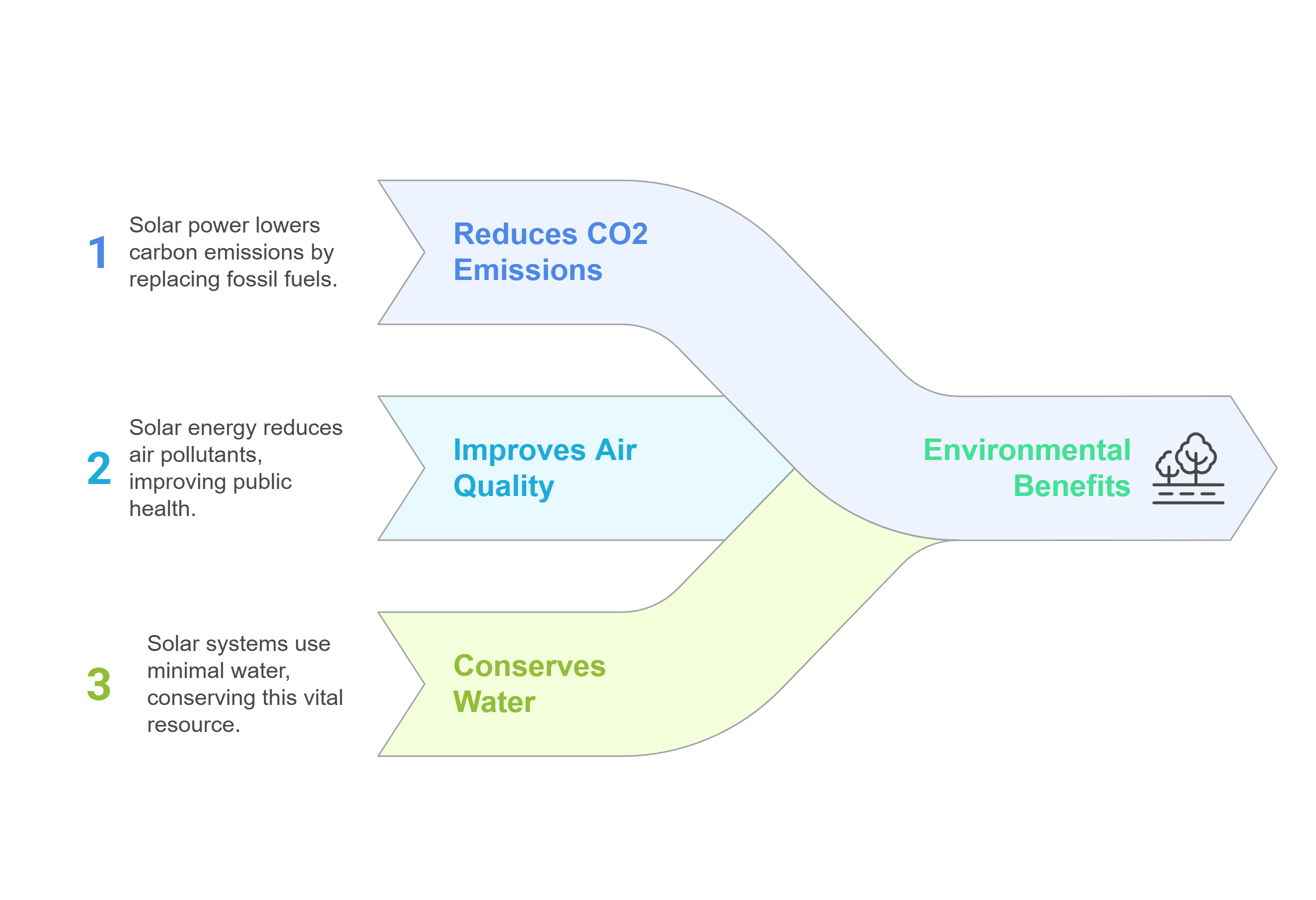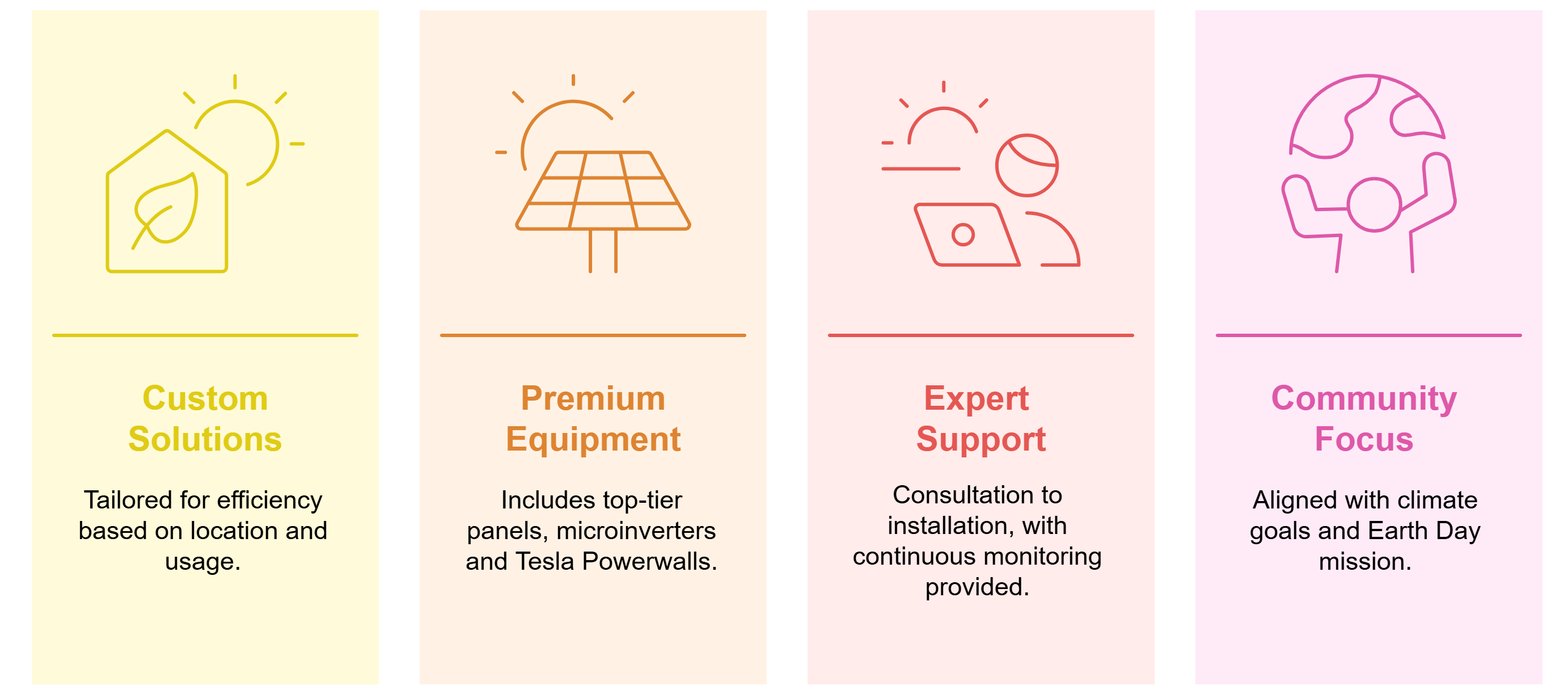Blog

Every April 22, Earth Day unites over a billion people globally to act for a cleaner, healthier planet. Earth Day 2025 centers on the theme “Our Power, Our Planet”, — a call to action that places renewable energy at the heart of our environmental response.
Why “Our Power, Our Planet” Matters in 2025
The 2025 theme underscores the urgent need to triple renewable energy generation by 2030, spotlighting solar, wind, hydroelectric, geothermal, and tidal sources as sustainable alternatives to fossil fuels. The aim? Curb carbon emissions, reduce pollution-related health issues, and promote equitable access to energy across the globe. This new direction builds on the momentum of past themes like 2023’s “Invest in Our Planet” and 2024’s “Planet vs. Plastics,” the latter of which spurred international action against plastic pollution.
Aligned with this environmental urgency, Earth Day 2025 amplifies the call to triple renewable energy capacity by 2030, a key commitment forged during the COP28 UN Climate Summit. Leaders at COP28 agreed that increasing global renewable capacity to at least 11,000 GW by 2030 is essential to keep the 1.5°C climate target within reach.
At the forefront of this transformation is solar energy — a powerful, accessible tool that empowers individuals, businesses, and communities to reduce carbon footprints and contribute to a clean energy future.
Climate change is intensifying, with rising temperatures, more frequent wildfires, and severe droughts. The UN reports that global greenhouse gas emissions must be cut nearly in half by 2030 to avoid the worst climate scenarios. Solar energy, as the fastest-growing electricity source globally, plays a central role in achieving this shift.
The International Energy Agency (IEA) notes that scaling up solar energy is not just critical but urgent. Between now and 2030, solar PV must expand at three times its current rate to meet clean energy goals and phase out fossil fuels.
Why Solar Power is Key to a Clean Energy Revolution
Solar energy harnesses the sun’s rays to produce electricity with zero greenhouse gas emissions during operation. It’s renewable, abundant, and becoming more affordable each year. According to the U.S. Department of Energy, the cost of solar photovoltaic panels has dropped by more than 70% since 2010, making solar more accessible to homeowners and businesses alike.

💸 Lower Utility Bills & Long-Term Savings
Going solar allows homeowners and businesses to dramatically reduce energy bills. Over time, these savings often pay back the system cost and more. According to the DOE, solar adopters can save tens of thousands of dollars over 20-30 years, depending on system size and local utility rates.
🌟 Federal and State Incentives
The Federal Investment Tax Credit (ITC) currently allows you to deduct 30% of solar installation costs from your federal taxes. In California, programs like Self-Generation Incentive Program (SGIP) and Net Energy Metering (NEM 3.0) further enhance savings by crediting excess power sent back to the grid.
🔋 Energy Independence
Solar users generate their own power, protecting against rising utility costs and outages. When combined with battery storage, solar offers even more energy security.
The Case for Renewable Energy
As populations and economies grow, global energy demand continues to rise. Relying on fossil fuels to meet this demand is both unsustainable and harmful, contributing significantly to climate change and public health issues. Renewable energy offers a cleaner, healthier alternative — and it’s already transforming nations:
- One-third of Australian homes are solar-powered.
- Uruguay now generates 98% of its electricity from renewables.
- Denmark’s wind energy has powered the entire country for full days.
- Kenya derives nearly half of its electricity from geothermal energy.
- Texas leads the U.S. in wind energy, shifting away from its oil-heavy past.
Globally, the renewable energy market was worth $1.21 trillion in 2023 and is projected to grow over 17% annually through 2030, creating at least 14 million new jobs in the process.
People Power: Equity Through Clean Energy
Access to electricity is a basic right — yet 3.8 billion people live below the Modern Energy Minimum, consuming less than 1,000 kWh annually. Renewable energy can help uplift these communities, providing reliable power for homes, schools, and healthcare. Clean energy also improves health by reducing air pollution that causes asthma, heart disease, and cancer, especially among women and children.
Planet First: Fighting Climate Change at the Source
Fossil fuels are the primary source of greenhouse gas emissions driving global warming. Renewable energy generates electricity with little to no emissions, offering a tangible solution to the climate crisis. Yes, challenges remain — such as sourcing materials for solar panels — but unlike fossil fuels, renewable energy is backed by a global research community dedicated to sustainable innovation.
Since 2011, LA Solar Group has empowered thousands of Americans to adopt solar energy with confidence. We lead with:

We’re not just a solar company — we’re part of the sustainability movement driving real change.
This Earth Day, join a global movement to create a cleaner, safer future. Whether you’re a homeowner, business owner, or policy supporter, your actions matter.
Here’s how you can help:
✅ Book a free solar consultation with LA Solar Group.
✅ Share solar facts and this article on social media.
✅ Advocate for renewable energy policies in your area.
Celebrate Earth Day 2025 with action. Invest in your future and the planet by switching to clean, renewable solar energy.
- Our Power, Our Planet: Earth Day’s 2025 Theme Decoded
- COP28 Tripling Renewable Capacity Pledge – Analysis – IEA
- Executive summary – Renewables 2023 – Analysis – IEA
- Solar Industry Research Data – SEIA.
- Residential Clean Energy Credit | Internal Revenue Service
- Self-Generation Incentive Program (SGIP)
- Net Metering – SEIA

